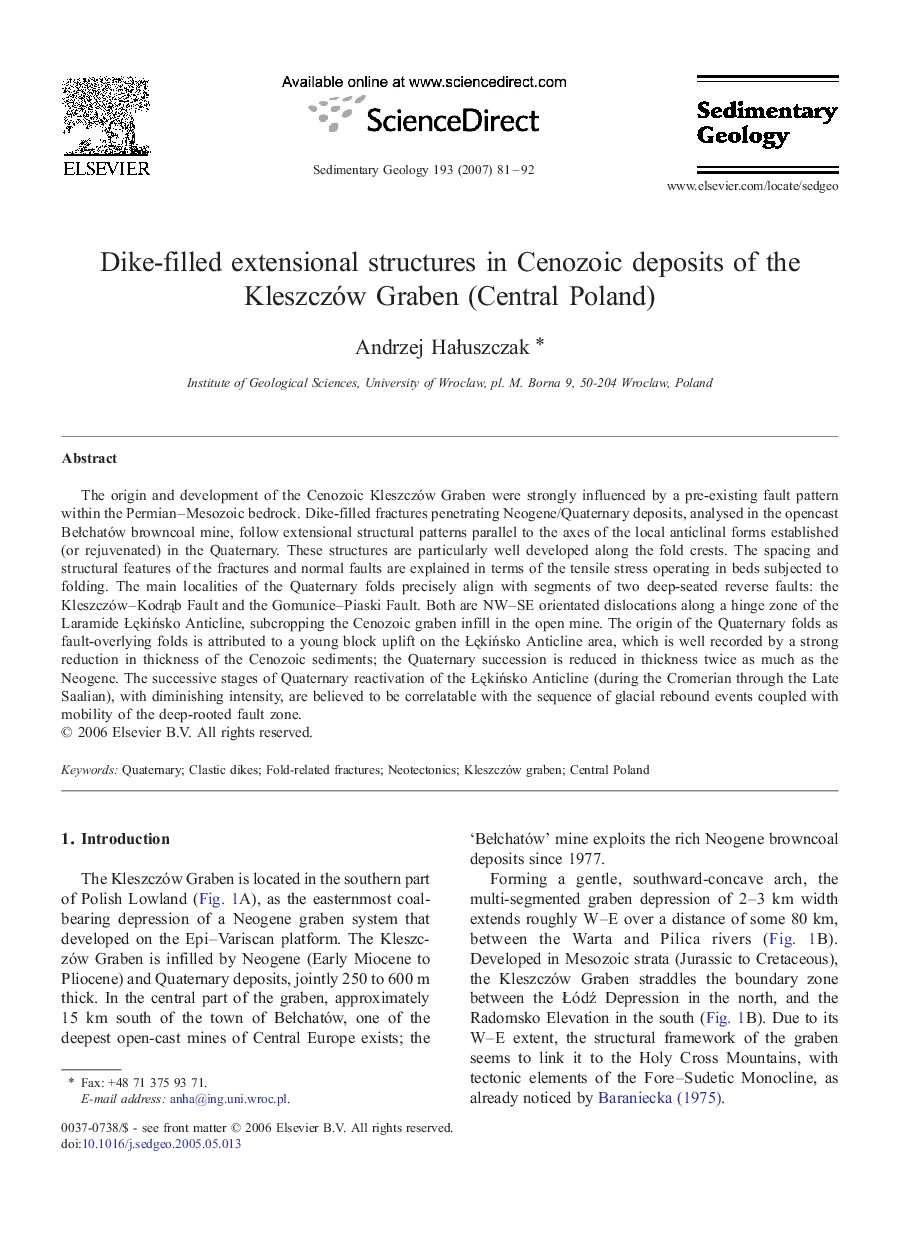| Article ID | Journal | Published Year | Pages | File Type |
|---|---|---|---|---|
| 4690854 | Sedimentary Geology | 2007 | 12 Pages |
Abstract
The origin and development of the Cenozoic Kleszczów Graben were strongly influenced by a pre-existing fault pattern within the Permian-Mesozoic bedrock. Dike-filled fractures penetrating Neogene/Quaternary deposits, analysed in the opencast BeÅchatów browncoal mine, follow extensional structural patterns parallel to the axes of the local anticlinal forms established (or rejuvenated) in the Quaternary. These structures are particularly well developed along the fold crests. The spacing and structural features of the fractures and normal faults are explained in terms of the tensile stress operating in beds subjected to folding. The main localities of the Quaternary folds precisely align with segments of two deep-seated reverse faults: the Kleszczów-KodrÄ
b Fault and the Gomunice-Piaski Fault. Both are NW-SE orientated dislocations along a hinge zone of the Laramide ÅÄkiÅsko Anticline, subcropping the Cenozoic graben infill in the open mine. The origin of the Quaternary folds as fault-overlying folds is attributed to a young block uplift on the ÅÄkiÅsko Anticline area, which is well recorded by a strong reduction in thickness of the Cenozoic sediments; the Quaternary succession is reduced in thickness twice as much as the Neogene. The successive stages of Quaternary reactivation of the ÅÄkiÅsko Anticline (during the Cromerian through the Late Saalian), with diminishing intensity, are believed to be correlatable with the sequence of glacial rebound events coupled with mobility of the deep-rooted fault zone.
Related Topics
Physical Sciences and Engineering
Earth and Planetary Sciences
Earth-Surface Processes
Authors
Andrzej HaÅuszczak,
